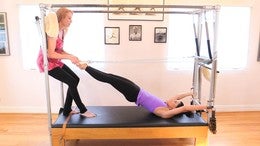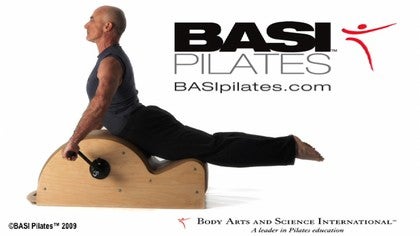Premium workshop
You can view a 2 minute preview. For details, scroll down below the video.
Description
Jillian Hessel shows you how to get the most out of your training sessions on the Cadillac. Accompanied by a handbook (linked below), listing each exercise in sequence with the video, Jillian describes the equipment set up, body position, recommended repetitions, modifications, special cautions, and benefits for each exercise.
Special Note - Jillian's Cadillac, featured in this video, was originally built by Joseph Pilates for Carola Trier.
This video was filmed in 1997 by Jillian Hessel and digitally remastered in 2006.
Special Note - Jillian's Cadillac, featured in this video, was originally built by Joseph Pilates for Carola Trier.
This video was filmed in 1997 by Jillian Hessel and digitally remastered in 2006.
What You'll Need: Cadillac, Magic Circle
About This Video
Workshops: Special Contributions
Comments
Skip to Latest
Beautiful to watch, useful to perform and teach to clients. Thanks. Grazie!
9 years ago
I really enjoy the way you explain the movement - it makes so much sense, and you do it so beautifully. Thank you Jillian.
6 years ago
Thank you so much for watching my presentation, and for taking the time to comment. With so many choices available these days, I appreciate you chose mine!😀🙏
6 years ago
You need to be a subscriber to post a comment.
Please Log In or Create an Account to start your free trial.















